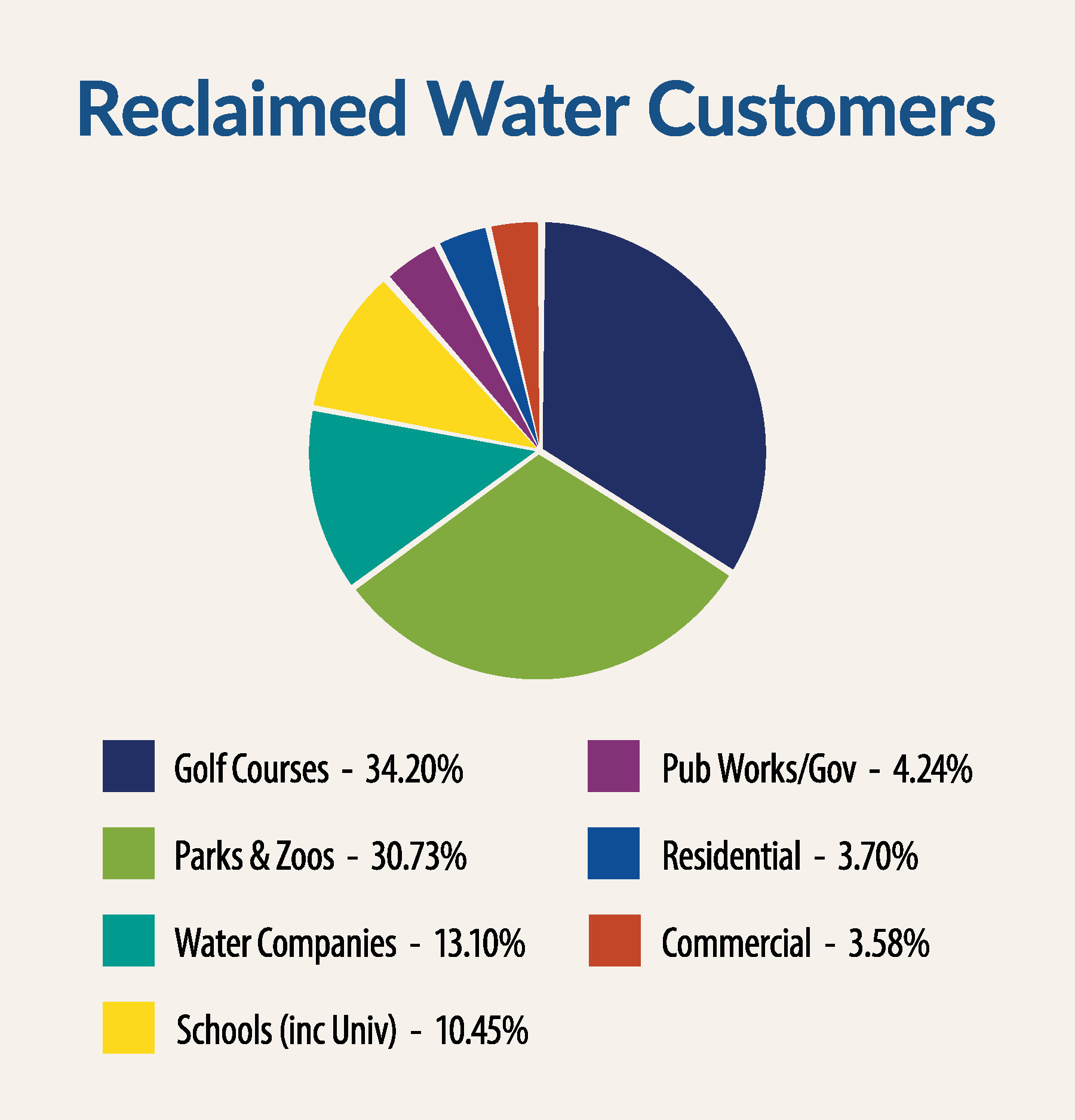
Recycling water into reclaimed water provides a critical renewable source to our community. In 1984, Tucson became one of the nation’s first communities to launch a “purple pipe” system to recycle wastewater to irrigate large turf areas like golf courses and parks. Today, Tucson Water’s reclaimed system is recognized globally as one of the most proven and innovative approaches to maximizing this water resource. Here are the facts about this often-overlooked system:
What is reclaimed water? It is highly treated wastewater that can be safely used again for a variety of specific purposes.
How is reclaimed water used? The most common use is irrigation for landscapes and turf, in addition, it is used for dust control, firefighting, and industrial applications. Tucson Water also uses reclaimed water to support projects like the Santa Cruz River Heritage Project, the Shirley C. Scott Southeast Houghton Area Recharge Project, and Sweetwater Wetlands that offer recreation and wildlife habitat.
Why use reclaimed water? What are its benefits? Reclaimed water is an essential component of our One Water approach and helps the utility manage our water resources now and for the future. Using reclaimed water conserves valuable tap water, saving enough tap water every year to serve more than 60,000 families. It’s also a local water source that grows as the community grows. We can use it to replenish our aquifer and save it for future use. And it helps to restore habitat important to wildlife.
How is it produced? Tucson’s reclaimed water comes from highly treated wastewater from either Pima County's Agua Nueva Wastewater Reclamation plant, recovered groundwater, or soon, water from the Tucson Airport Remediation Project. Tucson Water disinfects this water with chlorine, similar to how drinking water is treated.
How is reclaimed water distributed? Our reclaimed system, with its purple pipes and signs, includes 173 miles of pipe, 15 boosters, and 6 reservoirs. It is separate from the drinking water distribution system.